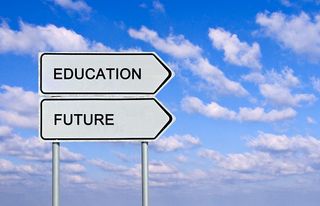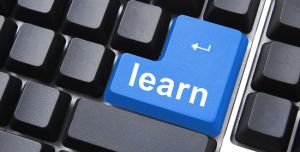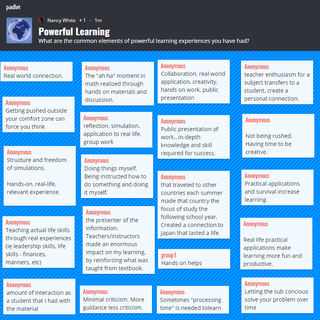
CC from http://myenglishabc.wikispaces.com/
What is the purpose of education? This seems like a simple question on the surface, but one that can yield many different responses if you queried a room full of people. Answers may range from a government’s responsibility and a citizen’s right to be prepared for life, to preparing a workforce for the benefit of society, and everywhere in-between.
I believe that no matter your point of view, there is common ground in the belief that education is essential to both the future success of the individual, and to the success of community in which the individual lives. Thomas Jefferson said:
“An enlightened citizenry is indispensable for the proper functioning of a republic. Self-government is not possible unless the citizens are educated sufficiently to enable them to exercise oversight. It is therefore imperative that the nation see to it that a suitable education be provided for all its citizens.”

How we go about the business of education, or schooling, is another matter, and opinions abound on this topic. When I am working with groups of teachers and parents to help them understand how to make learning more relevant and lasting, I often ask them to reflect on their own experiences as a learner to reveal the elements of their education that have made a difference to them. I ask, “What is the most memorable and powerful learning experience you can remember?” Small groups will have time to think and reflect, and then share these experiences with each other. Then I have them create a list the common elements. I have done this exercise at least a dozen times. The amazing thing is, that even though the stories of powerful learning are all very different, the elements that made that learning powerful and lasting are the same. These are the elements of powerful learning I consistently hear during this exercise:
- Real world problem solving/
- Opportunity for creativity
- Hands-on
- Thinking is stretched
- Collaborative
- Personal connection
- Building skills along with knowledge
- Choice/freedom of process and final product
- Authentic/real world audience
- Time & pace relaxed –not rushed
Surprisingly, when these same groups have reflected on the frequency of opportunity to learn in in ways that produce powerful and lasting results, the answer has been minimal. The focus in schools and education is covering content, and that takes time.
Right now, schools around the country are preparing to launch the 2017-18 school year and students will soon begin a new year of learning. Wouldn’t it be awesome if teachers and educational leaders designed learning that would incorporate these common elements of powerful learning?

cross posted at Innovations in Education
Nancy White is the 21st Century Learning & Innovation Specialist for Academy School District 20, providing professional development on 21st century skills and technology integration, and working with the IT-ES team to carry out the district’s 21st Century Learning Plan. Nancy served on an ad-hoc team to help with the integration of 21st century skills into Colorado’s revised content standards, and co-authored The Colorado Learner’s Bill of Rights. Read more at Innovations in Education.

